Xiaohong Jiang
SoK: Comparing Different Membership Inference Attacks with a Comprehensive Benchmark
Jul 12, 2023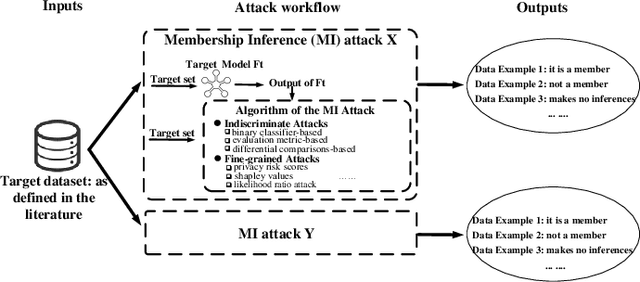
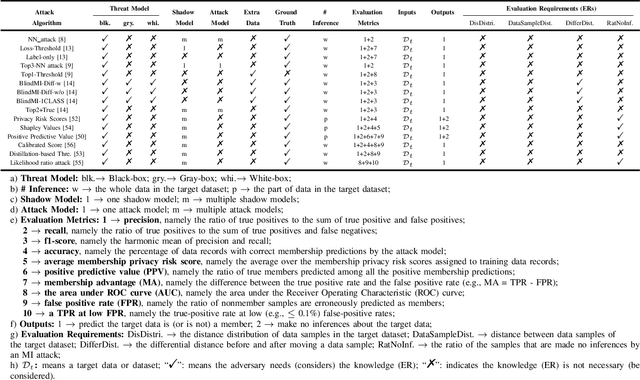

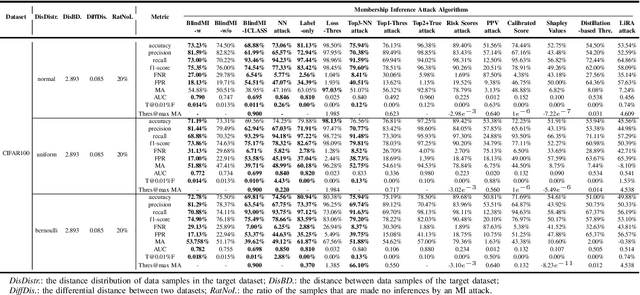
Abstract:Membership inference (MI) attacks threaten user privacy through determining if a given data example has been used to train a target model. However, it has been increasingly recognized that the "comparing different MI attacks" methodology used in the existing works has serious limitations. Due to these limitations, we found (through the experiments in this work) that some comparison results reported in the literature are quite misleading. In this paper, we seek to develop a comprehensive benchmark for comparing different MI attacks, called MIBench, which consists not only the evaluation metrics, but also the evaluation scenarios. And we design the evaluation scenarios from four perspectives: the distance distribution of data samples in the target dataset, the distance between data samples of the target dataset, the differential distance between two datasets (i.e., the target dataset and a generated dataset with only nonmembers), and the ratio of the samples that are made no inferences by an MI attack. The evaluation metrics consist of ten typical evaluation metrics. We have identified three principles for the proposed "comparing different MI attacks" methodology, and we have designed and implemented the MIBench benchmark with 84 evaluation scenarios for each dataset. In total, we have used our benchmark to fairly and systematically compare 15 state-of-the-art MI attack algorithms across 588 evaluation scenarios, and these evaluation scenarios cover 7 widely used datasets and 7 representative types of models. All codes and evaluations of MIBench are publicly available at https://github.com/MIBench/MIBench.github.io/blob/main/README.md.
Covert Communication in Hybrid Microwave/mmWave A2G Systems with Transmission Mode Selection
Feb 01, 2023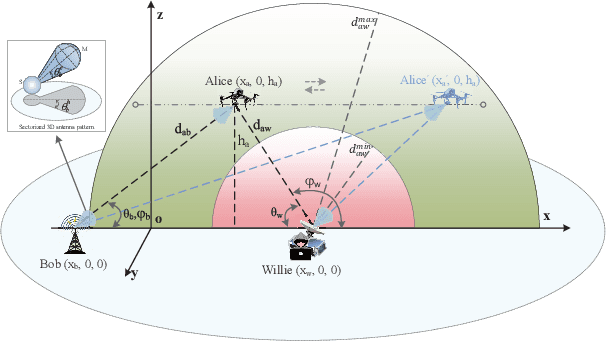
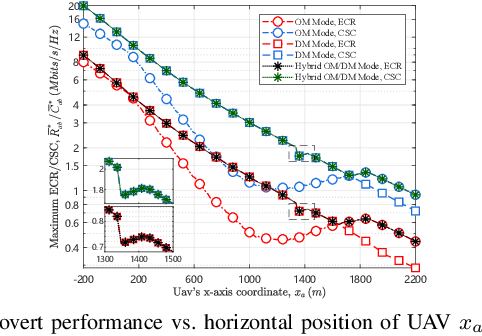
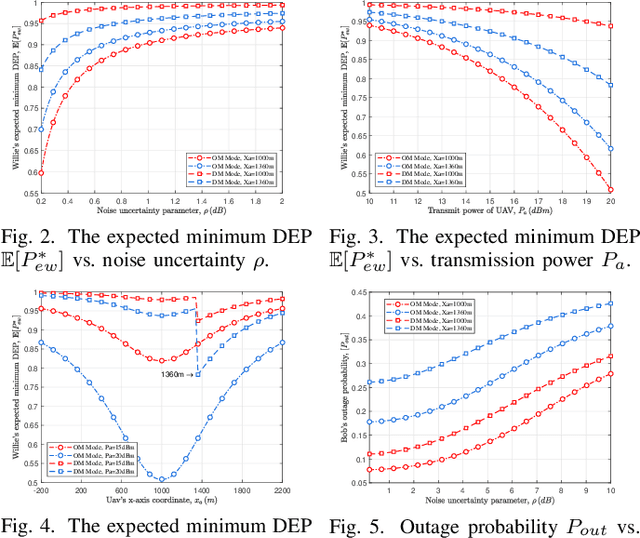
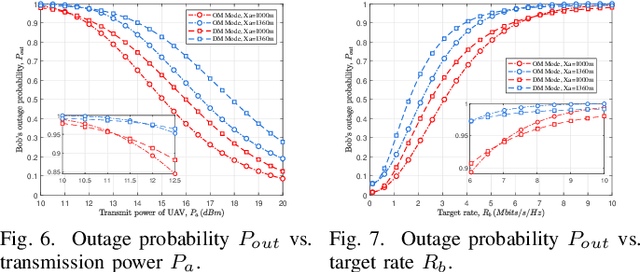
Abstract:This paper investigates the covert communication in an air-to-ground (A2G) system, where a UAV (Alice) can adopt the omnidirectional microwave (OM) or directional mmWave (DM) transmission mode to transmit covert data to a ground user (Bob) while suffering from the detection of an adversary (Willie). For both the OM and DM modes, we first conduct theoretical analysis to reveal the inherent relationship between the transmit rate/transmit power and basic covert performance metrics in terms of detection error probability (DEP), effective covert rate (ECR), and covert Shannon capacity (CSC). To facilitate the transmission mode selection at Alice, we then explore the optimization of transmit rate and transmit power for ECR/CSC maximization under the OM and DM modes, and further propose a hybrid OM/DM transmission mode which allows the UAV to adaptively select between the OM and DM modes to achieve the maximum ECR and CSC at a given location of UAV. Finally, extensive numerical results are provided to illustrate the covert performances of the concerned A2G system under different transmission modes, and demonstrate that the hybrid OM/DM transmission mode outperforms the pure OM or DM mode in terms of covert performance.
Soft Hierarchical Graph Recurrent Networks for Many-Agent Partially Observable Environments
Sep 05, 2021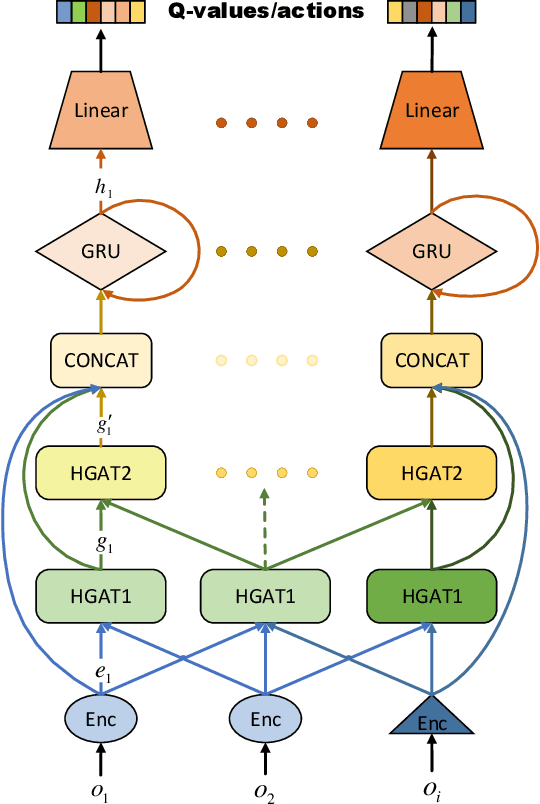
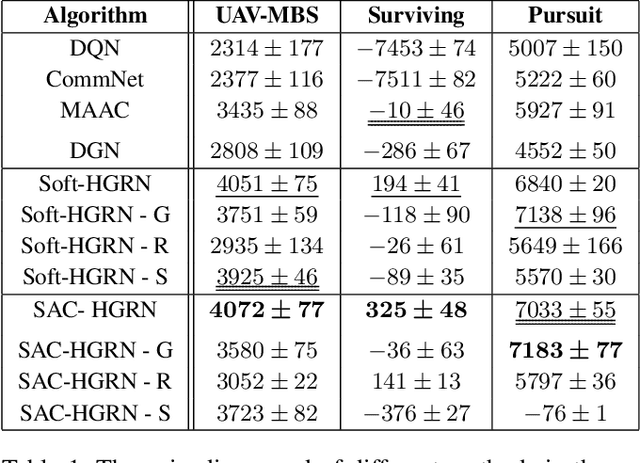
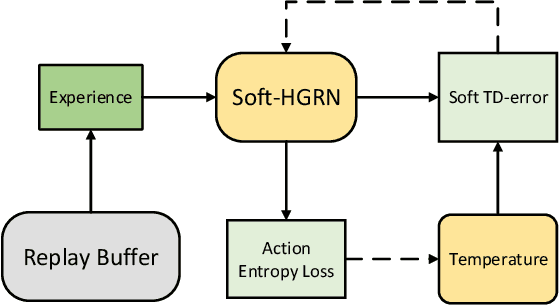
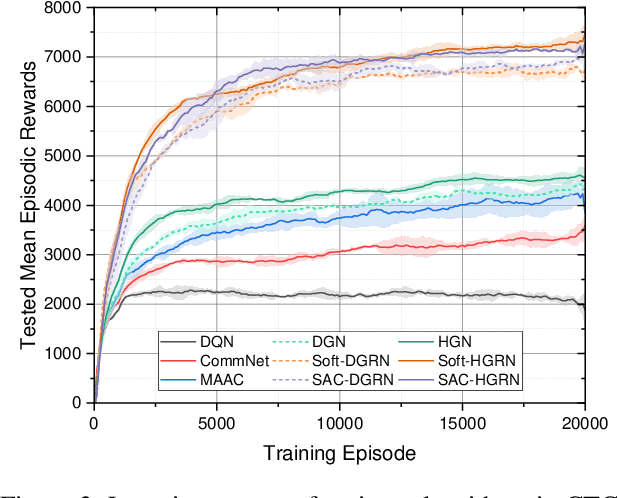
Abstract:The recent progress in multi-agent deep reinforcement learning(MADRL) makes it more practical in real-world tasks, but its relatively poor scalability and the partially observable constraints raise challenges to its performance and deployment. Based on our intuitive observation that the human society could be regarded as a large-scale partially observable environment, where each individual has the function of communicating with neighbors and remembering its own experience, we propose a novel network structure called hierarchical graph recurrent network(HGRN) for multi-agent cooperation under partial observability. Specifically, we construct the multi-agent system as a graph, use the hierarchical graph attention network(HGAT) to achieve communication between neighboring agents, and exploit GRU to enable agents to record historical information. To encourage exploration and improve robustness, we design a maximum-entropy learning method to learn stochastic policies of a configurable target action entropy. Based on the above technologies, we proposed a value-based MADRL algorithm called Soft-HGRN and its actor-critic variant named SAC-HRGN. Experimental results based on three homogeneous tasks and one heterogeneous environment not only show that our approach achieves clear improvements compared with four baselines, but also demonstrates the interpretability, scalability, and transferability of the proposed model. Ablation studies prove the function and necessity of each component.
 Add to Chrome
Add to Chrome Add to Firefox
Add to Firefox Add to Edge
Add to Edge